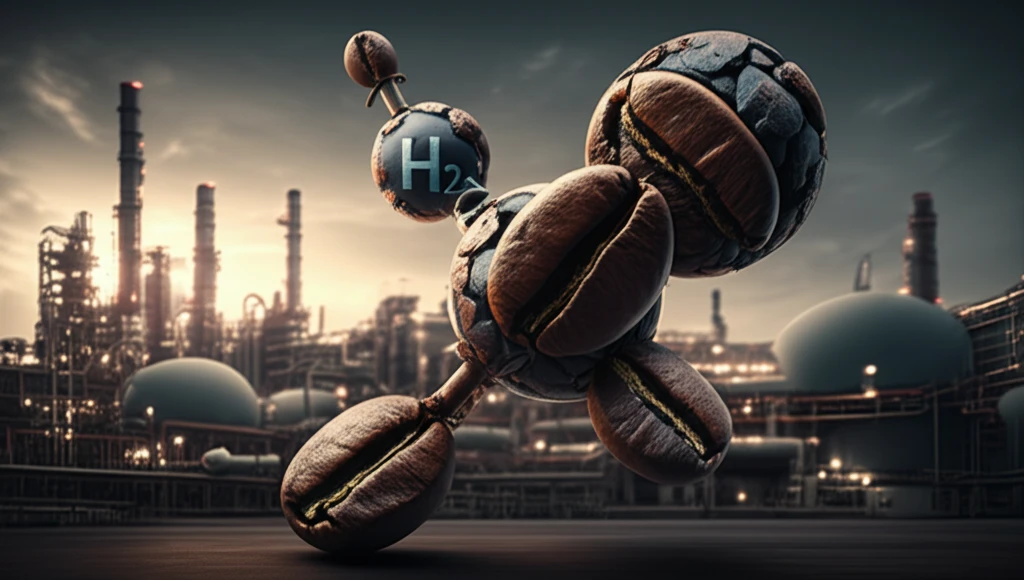
Brewing a Better Future: How Coffee Waste Could Solve Our Hydrogen Needs
"From your morning cup to sustainable energy: Unlocking the potential of coffee grounds in hydrogen recovery."
Hydrogen is a crucial element in many industries, especially oil and petrochemicals. Modern refineries rely on it more and more to process heavier oil, but producing it can be costly and energy-intensive. In these facilities, hydrogen-rich off-gas streams are often burned off as waste, a practice that's both inefficient and environmentally unfriendly.
But what if we could capture that wasted hydrogen and put it to good use? Adsorption, a technology that separates gases, offers a promising way to recover hydrogen from these off-gas streams. However, the key to effective adsorption lies in the adsorbent material itself. Activated carbon is a popular choice, but it can be expensive. This is where coffee grounds come in.
Coffee grounds, a byproduct of our daily caffeine fix, are an abundant and low-cost resource. Every year, millions of tons of coffee grounds are generated worldwide, often ending up in landfills. Turning this waste into activated carbon could not only reduce disposal problems but also provide a sustainable and affordable adsorbent for hydrogen recovery.
From Waste to Resource: How Coffee Grounds Become Hydrogen Heroes

Turning coffee grounds into activated carbon involves a process called chemical activation. In a recent study, researchers used zinc chloride (ZnCl2) to treat coffee grounds at a high temperature (600°C). This process creates a carbon material with a high surface area and porous structure, making it ideal for adsorption.
- Preparation: Coffee grounds are washed, dried, crushed, and sieved to a uniform particle size.
- Activation: The grounds are mixed with a zinc chloride solution and heated under a nitrogen flow.
- Characterization: The activated carbon is tested for surface area, pore volume, and morphology.
- Adsorption Testing: The material's ability to adsorb hydrogen and methane, both separately and in a mixture, is evaluated under various pressures and temperatures.
A Sustainable Sip Towards a Cleaner Future
This research highlights the potential of turning waste into a valuable resource. By transforming coffee grounds into activated carbon, we can create a sustainable and cost-effective solution for hydrogen recovery. This approach not only reduces waste but also contributes to a cleaner energy future. So, the next time you enjoy a cup of coffee, remember that the grounds left behind could play a vital role in powering our world.
